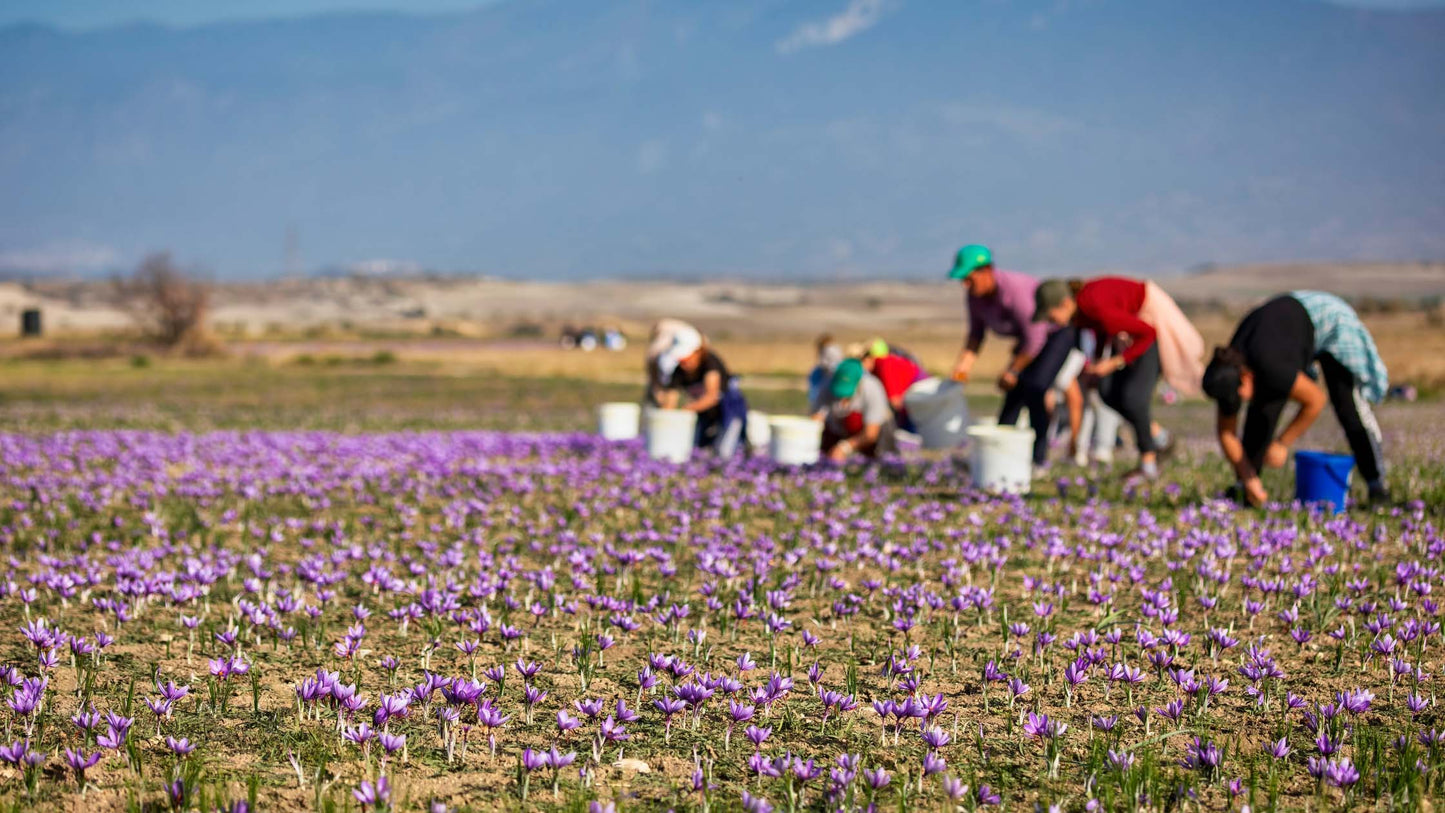Offer
Provide additional details about the offer you're running.

At the heart of Persian culinary artistry lies a treasure not just cherished for its golden hue but revered for its contribution to the gastronomy and culture of Iran. Saffron, often referred to as the Red Gold of Iran, is a testament to the rich heritage and the intricate flavors that define Iranian dishes. This precious spice, derived from the stigmas of the Crocus Sativus flower, is much more than a seasoning—it is the soul of Persian cuisine, offering both healing and joy in every strand.
The journey of saffron begins in the ancient lands of Iran, where it was first cultivated before making its way across continents to Greece, India, Turkey, and China. Despite facing competition from these new producers, Iran proudly remains the leading saffron producer, holding 90% of the world's saffron production under its belt. The essence of saffron, with its rich history and the laborious effort required for its harvest, is what makes it immensely valuable.
Iran's Khorasan Province is synonymous with saffron cultivation, although regions like Fars, Kerman, Lorestan, and East Azerbaijan have also embraced the cultivation of this golden spice. The cultivation process is a testament to patience and precision, requiring 150 flowers to produce just 1 gram of dried saffron. This painstaking process, coupled with saffron's vibrant flavor and coloring properties, justifies its nickname, the Red Gold.
Saffron thrives in the arid climate of Iran, flourishing in well-drained, neutral, or silty soil conditions. The harvest season in November is a spectacle, with the countryside adorned with purple flowers, signaling the time to collect this prized spice. This period marks a significant time in Iran, as the harvest of saffron not only contributes to the economy but also to the cultural identity of the nation.
While saffron is celebrated in the kitchen, its applications extend to fabric dyeing, cosmetics, and even medicine, thanks to its anti-cancer, anti-inflammatory, and anti-depressant properties. Its medical benefits are as diverse as its culinary uses, providing warmth and healing to those who consume it.
Saffron's influence in Iranian cuisine cannot be understated. It brings life to dishes such as Bastani Sonnati, the beloved saffron ice cream, and Sholeh Zard, a sweet rice pudding essential to religious and cultural ceremonies. The process of brewing saffron, a practice passed down through generations, enhances dishes with its unique flavor and vibrant color, symbolizing Iranian hospitality and tradition.
The preservation of saffron is crucial to maintaining its distinct aroma and flavor. Stored in a dark, cool, and dry place, saffron retains its qualities, ready to be brewed and added to dishes, enriching them with its color and essence. This practice ensures that the Red Gold remains a staple in Persian cooking, offering a taste of Iran's rich culinary heritage.
Persian Saffron is more than just a spice—it's a journey through Iran's history, culture, and culinary traditions. As the secret ingredient behind the exquisite flavors of Iranian cuisine, saffron invites you to explore its versatility and medicinal benefits.
Our collection of premium saffron is a tribute to the tradition and flavors of Iran, offering you a piece of Persian heritage in every strand.
Dive into the world of Persian Saffron and discover the secret behind Iran's celebrated dishes. Let the Red Gold transform your cooking and introduce you to the authentic taste of Persian cuisine.